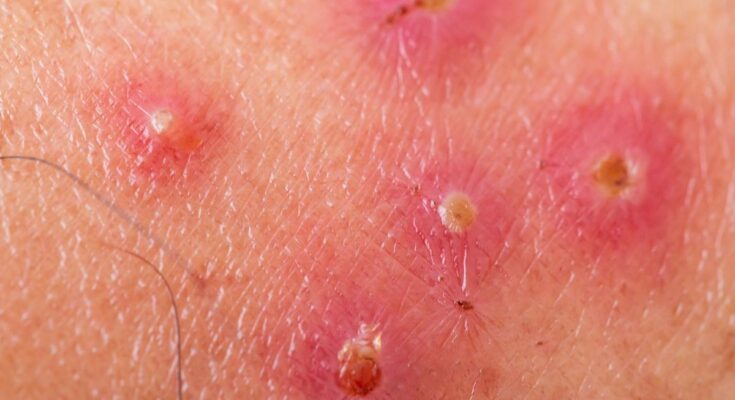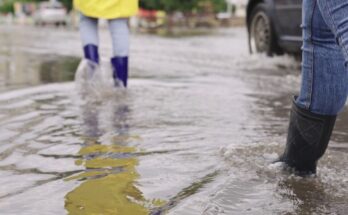Published on
Updated
Ecthyma corresponds to an ulcerated form of impetigo. Itching is common and scratching can cause the lesions to spread. Dr. Marc Perrussel, dermatologist and venereologist, sheds light on this very contagious skin infection.
Definition: what is ecthyma in dermatology?
A very contagious type of impetigo
Ecthyma is a complication of impetigoa highly contagious superficial skin infection due to staphylococcus (staphylococcus aureus) or streptococcus (streptococcus pyogenes). There are two forms of impetigo:
- Crusty impetigo which results in the appearance of small vesicles filled with a yellowish liquid which burst quickly before drying out to form a small honey-colored crust. This is the most common form of impetigo which mainly affects children under the age of four. More rarely, it can occur in older children and adults;
- Bullous impetigo is more common in newborns and infants. The symptoms are the same but the blisters are larger. Most often painless, these lesions can however cause itching. The infection may persist for a few days to a few weeks.
What causes ecthyma and impetigo? Where do we catch it?
Staphylococcus aureus, streptococcus pyogenes: the bacteria responsible
The bacteria responsible for ecthyma are staphylococcus and/or streptococci. “This disease develops more readily in children, on a wound that has not been properly disinfected, following chickenpox for example,” informs Dr. Marc Perrussel. A poor hygienethe presence of cases of ecthyma in the community or even one infection nasale are also contributing factors. “In adulthood, ecthyma occurs mainly in elderly, malnourished, diabetic, immunocompromised patients (in cases of chronic illness or immunosuppressive treatment)”, continues the dermatologist. Scratching lesions linked to an insect bite or eczema are also risk factors.
What are the symptoms of ecthyma?
Ecthyma is a progressive form of impetigo causing sometimes purulent ulcerations of the skin. “This ulceration is called cookie-cutter, it appears in the form of a hollow covered with a blackish and crumbly crust”, explains the specialist. Most often painless, these lesions can nevertheless be responsible for itching.
Diagnosis in children and adults
The diagnosis of ecthyma is based on clinical examination and observation of the lesions. “It is always interesting to make a bacteriological sample to identify the bacteria in question and test its resistance to antibiotics. This will make it possible to determine which molecule will be effective on this bacteria. comments Dr Marc Perrussel.
How to get rid of impetigo and treat ecthyma?
“First, the affected parts of the body must be disinfected using an antiseptic, then cleaned with soap and water several times a day to facilitate the removal of the scabs. Sometimes, the dermatologist will carry out the removal of the scabs which contain lots of germs, then he will prescribe a oral antibiotic treatmentwhatever the extent of the ulcerations”indicates the dermatologist.
Does impetigo leave scars?
Most of the time, impetigo lesions disappear without leaving any scars.




